What is the Difference Between ASET And Ideal Scope Images?
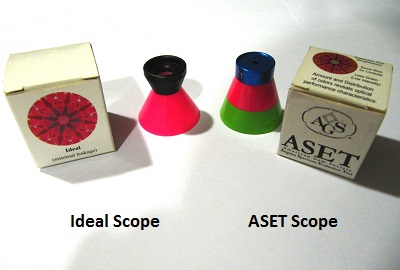
Which is better for evaluating a diamond’s light performance?
Despite their similar looks, there are different benefits and drawbacks between the ASET and Idealscope. Obviously, both can be used to assess the light performance of diamonds but they do it in a slightly different manner.
In this article, you will find out what the differences between an ASET and Idealscope are and which one you should use when selecting a diamond. Let’s jump right in…
How Does the Idealscope Diamond Evaluation Tool Work?
If you look at an Idealscope, you can see that it consists of a black lens and a red reflecting material. The 10x magnifying lens allows you to see how much light return the diamond displays; red indicates light return, black indicates contrast and white indicates light leakage.
Here’s a schematic diagram of how it works and how it is used to reveal areas of a diamond that reflect light or leak light.
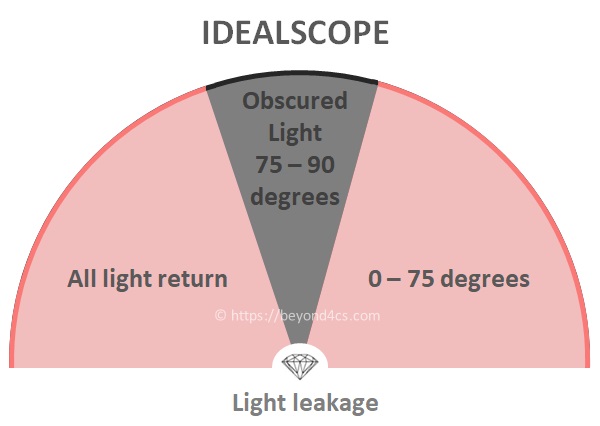
Basically, all you need to do is to scope your diamond through the idealscope and then compare it to the reference chart below. It’s simple, efficient and relies on hard tangible data for analysis.
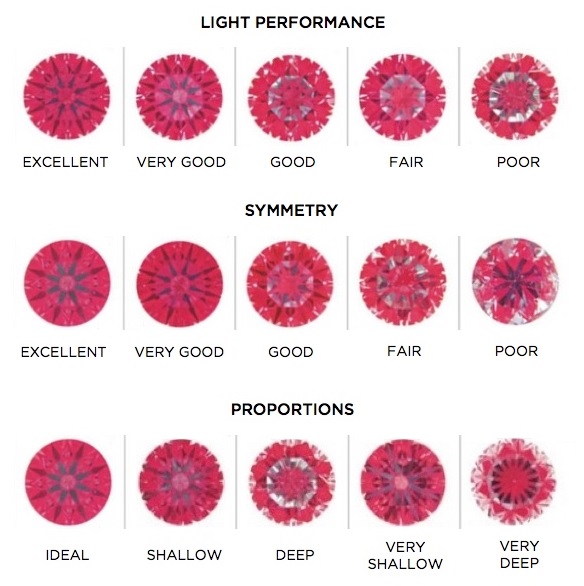
What is ASET and How Does It Work?
The ASET was developed by American Gem Society (AGS) as a means to evaluate a diamond’s interaction with light. By using color-coded images, it enables the viewer to see how well or badly the diamond handles light rays.
When you are looking at an ASET scope, you will see a blue, a red and a green belt. The colors represent contrast/head shadow, intense light return and indirect light return respectively. White/black areas represent areas of light leakage.
The 2 examples below show an ASET comparison of a well cut (left) round diamond against one that is poorly cut (right).
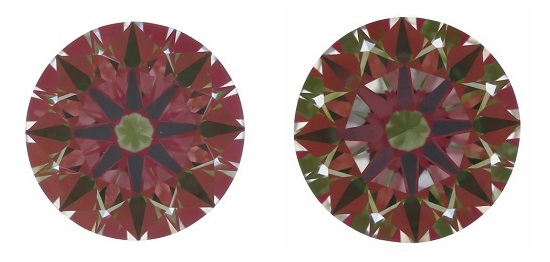
Here’s a schematic diagram of how the ASET scope works when it is used to analyze a diamond.
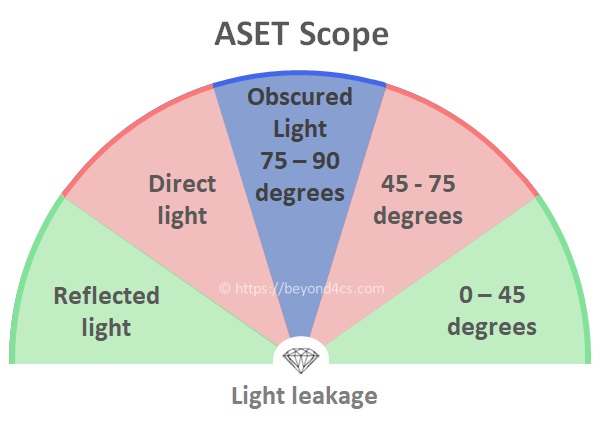
Don’t worry if all these still sound too technical to you. All you need to do is to get an ASET image of your diamond and compare it to the reference chart here to find out the light return capabilities of your diamond.
Advantages & Disadvantages – Idealscope vs ASET
Both the idealscope and ASET tools reveal areas of light leakage indicated in white (or black if it is not backlit), but the ASET image contains more information for evaluating light performance.
1.232 H VS2 Hearts and Arrows Round From Brian Gavin
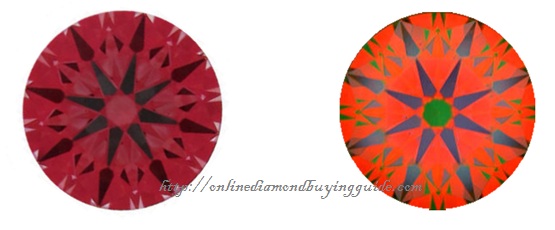
1.050 G VS2 Signature Series Princess Cut From Brian Gavin
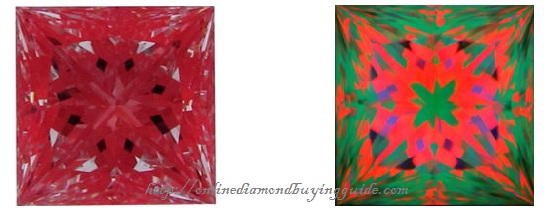
Idealscope images are depicted on the left and ASET images on the right.
Thanks to the lower green belt, the ASET is also able to highlight the intensity of light that is being returned to the eye. The ASET tool also works well on both loose and mounted diamonds without a need for backlighting.
The other advantage of using the ASET tool is that it isn’t limited to round diamonds and works very well with fancy shaped diamonds too. However, it does require more knowledge to correctly interpret the different colors of an ASET and understand what they mean.
As for the idealscope, it’s a really basic tool that is very simple to use and understand. It’s useful for assessing optical symmetry and brightness for round diamonds. However, the downside is that it doesn’t work well with fancy shapes.
As you can see in the princess cut example above, the idealscope image shows a saturated red across the diamond and there is a lot of missing detail about how the facets handle light. In contrast, the ASET is able to paint a complete picture of light return for the fancy shape diamond.
Which Tool Should Buyers Use? Is There a Reasonable Choice?
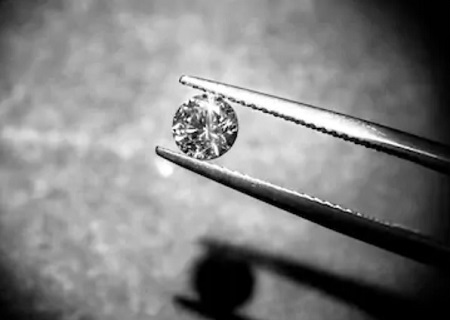
The answer is “it depends”. If you are buying a round diamond, you can use either one to make a proper judgment of cut quality. If you are buying a fancy shape diamond, you should only rely on the ASET.
The ASET scope obviously provides more information with regards to the light performance of the diamond. However, it does take a little more knowledge to decipher what the individual colors mean and how they correlate to a diamond’s optics. In general, the ASET is the preferred tool for evaluating fancy cut diamonds.
However, the simplicity of the idealscope brings certain lucidity to the table. You do not really need any gemological qualification to figure out which type of Idealscope images to look out for. Red is desirable and indicates light return while diamonds with too many white areas indicate problems with light leakage.
Neither of the tools is black magic and both are highly useful.
If you are buying a diamond in a physical retail store and you want to see a little more than what a simple 10x jeweler’s loupe might tell you, an Idealscope is – pun intended – the ideal tool you should use. Either way, both scopes will offer you compelling information in a non-technical manner.
If you are buying diamonds online, you should always request Idealscope/ASET images on top of photographs or videos. This will enable you to scrutinize performance in more details.
Related Articles
Leave A Comment


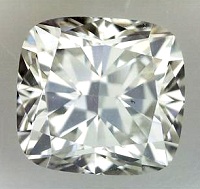
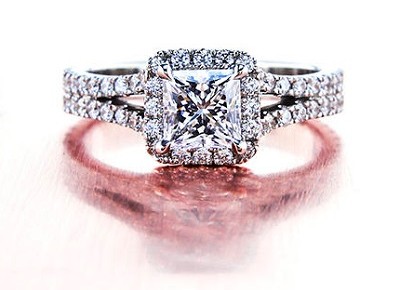
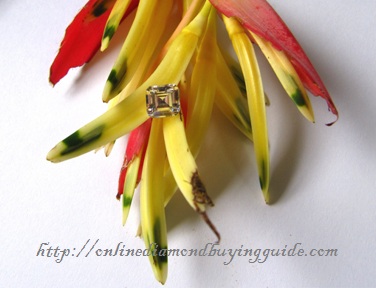









17 Comments
Are there any cases where the Ideal scope is giving a good light return image but the ASET scope is giving the same diamond a bad light return?
Is the ideal scope giving sufficient data for round diamond? Between an ideal scope vs aset image, which would you trust more?
To answer your first question, no. Images from both scopes should correlate to each other.
For round diamonds, the idealscope image provides sufficient data by itself if you know how to interpret it correctly. Likewise, the ASET scope image would too. If you are unsure about the scope image, send me an email with the picture attachment and I can help you take a look at them.
Thank you so much for assisting,
Do I need an ideal light device in order to get a better image of ideal or ASET image?
Are you buying a loose diamond or a diamond that is already mounted on a setting?
For a loose diamond, you may want to use a back lit source of lighting. For a mounted diamond, you can simply hold the ring up against normal fluorescent ceiling lighting in a well-lit room. That should do the trick.
In both scenarios, try to snap the image during the morning or the afternoon when you have additional background sources of light. That will improve the quality of the image.
I will be buying a loose diamond. Thanks for the opinion and advice. I will share the information with you once I have the diamond scope image :)
Thinking of buying a 2.22 XXX Gia certified, g color SI2 brilliant round diamond. Excellent polish and excellent symmetry with medium blue fluorescence. Measurements are 8.32-8.36*5.22. For about 24k can you please advise if this is a good deal?
Refer to this webpage: https://beyond4cs.com/diamond-prices/
Paul,
Thanks a ton for your insights. Is it true that two diamonds with dimensions that fall into the super ideal range, as defined by several websites, including whiteflash’s ACA criteria, should have the same light performance? This is assuming other things being equal, including clarity, etc.
I have dilemma on which of these two diamonds to get. Could you weigh in if you don’t mind. Both of which have ideal scope images.
1) https://www.whiteflash.com/loose-diamonds/round-cut-loose-diamond-3703109.htm
2) https://www.jamesallen.com/loose-diamonds/round-cut/1.20-carat-g-color-vvs2-clarity-ideal-cut-sku-2336286
Also The James Allen diamond has a dark red, does that mean the light return is superior?
Nope. Proportions are only a prerequisite. You will need scope images to determine whether they are really well cut or not. Most diamonds aren’t well cut even if they have the right proportions.
Anyway, I reviewed the diamonds and think you did well.
Both are well cut diamonds and are eyeclean.
https://www.jamesallen.com/loose-diamonds/round-cut/1.20-carat-g-color-vvs2-clarity-ideal-cut-sku-2336286 is the diamond I would prefer for its cut quality and better value for money. It’s the diamond I would personally buy.
Good find!
https://www.whiteflash.com/loose-diamonds/round-cut-loose-diamond-3703109.htm would be my second choice. The first diamond is a much better option. Go for that.
Hi Paul, thanks for the informative post! i am in the market for a diamond necklace and have located 3 diamonds on James Allen website that I think are of good value (also within my budget). I contacted James Allen customer rep yesterday via chat to request the Ideal scope images and was told that they could not provide them as they did not have those images on file. Is this expected? I thought I could be able to request that and have it done in 2-3 working days…
Can you kindly take a look at these 3 and let me know which one you would recommend? Thank you so much!
https://www.jamesallen.com/loose-diamonds/round-cut/0.51-carat-i-color-si1-clarity-excellent-cut-sku-2387920
https://www.jamesallen.com/loose-diamonds/round-cut/0.60-carat-i-color-vs1-clarity-excellent-cut-sku-3091525
https://www.jamesallen.com/loose-diamonds/round-cut/0.51-carat-i-color-vs2-clarity-excellent-cut-sku-3102443
The first diamond has some issues with clarity and the clouds are causing haziness. My top choice would be the 2nd stone with its larger carat size. The 3rd stone would be my 3rd choice. Hope this helps!
Very informative article.
Possibly common sense question but I have not been able to find a reliable information on this. Loose diamond: should the diamond be placed face up or face down on a backlit device to obtain optical information similar to the reference photos?
The only way a diamond can be assessed for light performance via ASET is to capture the photos FACE UP.
Hi Paul. Thank you so much for your guidance…not sure what I would have ended up buying without this website! I’ve tried to follow your guidelines as best as possible and think that this diamond seems decent. James Allen could not provide any scope or aset data sadly so I was wondering what your thoughts were if you get a chance.
https://www.jamesallen.com/loose-diamonds/round-cut/0.81-carat-d-color-vs2-clarity-ideal-cut-sku-7455989
Thank you!!
I reviewed the diamond here: https://www.jamesallen.com/loose-diamonds/round-cut/0.81-carat-d-color-vs2-clarity-ideal-cut-sku-7455989?a_aid=recommended and it is a decently well cut for lab created diamond standards. From experience, I can tell you that the diamond will show a solid red in the idealscope image. The diamond does have some inconsistencies in optical symmetry and if you want better cut diamonds, you will have to look at the natural diamond inventory instead.
Hello Paul,
I stumbled upon an article from the website beyond4cs.com about ASET vs IS.
I have one diamond which IS I have a hard time reading. Some told me it has an excellent light performance and some only a good one. Would you be so kind and help me with the image?
Thank you in advance,
Daisy
You can send the image as well as any related video links/certificates to my email address and I can help you review the IS image.